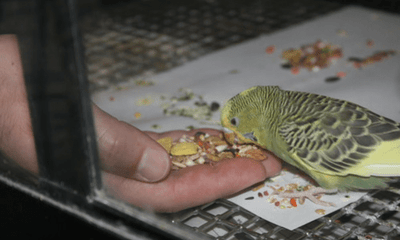Setting up a fish tank can be an exciting project, and creating a healthy environment for your fish takes some preparation. Whether you’re a first-time fish owner or a seasoned aquarist, it’s important to get things right from the start. Here’s a complete guide to help you set up a beautiful, thriving fish tank.
Choose the Right Tank Size for Your Fish and Plants
The first decision is the size of your tank. Consider the type and number of fish you plan to keep, as well as any plants. Most fish need adequate space to swim and grow, and overcrowding can lead to stress, illness, or aggression. If you’re adding live plants, think about how big they’ll get and the amount of light they’ll need. Plants not only enhance the look of the aquarium but also help with oxygenation and keeping the water clean. Aim for a balance between fish and plants for the best environment.
Set Up the Tank Floor with Substrate
The substrate is the material that lines the bottom of your aquarium, and it plays an important role in your tank’s ecosystem. It provides an anchor for live plants and houses beneficial bacteria that help break down waste. There are different types of substrate depending on your tank’s needs:
- Gravel: Ideal for most freshwater fish and basic plants
- Sand: Better suited for specific fish species, like bottom-dwellers, or for creating a natural look
Before adding the substrate, rinse it well to remove dust. Spread it evenly along the bottom of the tank, around 5cm should be sufficient.
Add Plants and Ensure Proper Oxygenation
Live plants are a great addition to your tank, as they improve water quality by absorbing carbon dioxide and releasing oxygen. They also offer natural hiding spots and reduce stress for your fish.
When selecting plants, make sure they are compatible with the size of your tank and the needs of your fish. After planting, ensure your aquarium is getting enough light for plant growth. Use an appropriate aquarium light to mimic natural daylight.
To help with oxygenation, consider using an air pump, which will add bubbles and increase the oxygen levels in the water. Some filters also assist with oxygenation by causing surface water movement.
Install a Filter and Use Bacterial Additives
A good filtration system is essential for maintaining clean, healthy water in your tank. Filters help remove waste, debris, and toxins like ammonia and nitrites. When you set up the filter, make sure it’s appropriate for the size of your tank. For new tanks, you’ll need to cycle the water by adding bacterial additives to establish beneficial bacteria that break down ammonia and nitrites, both of which can harm your fish. Cycling your tank before adding fish takes time, usually 2-4 weeks, so be patient and test the water regularly until it’s safe for your fish.
Prepare Fish Food
Once your tank is set up and running, it’s essential to have the right food ready for your fish. Fish have specific dietary needs depending on their species, and feeding them the correct food will keep them healthy and vibrant. Flake food is common for many fish, but you may also need pellets, freeze-dried, or frozen foods depending on your fish’s diet. Live food like brine shrimp or bloodworms can be a treat for some species, while herbivorous fish will need plant-based food or algae wafers. Make sure not to overfeed your fish. Feed them small amounts they can consume in about 2 minutes, once or twice a day.
Essential Extras
A few additional items are necessary to keep your aquarium in top shape:
- Water conditioner: Use this to remove harmful chlorine or chloramine from tap water.
- Heater: Some fish, like tropical species, need a specific temperature range to thrive. A reliable heater with a thermostat will help maintain consistent water temperature.
- Water testing kits: Regularly testing the water for pH, ammonia, nitrites, and nitrates is crucial to ensure a safe environment for your fish. Testing kits are easy to use and will alert you if adjustments are needed.
Setting up a fish tank is a rewarding process, and with the right preparation, your fish will thrive in a healthy, balanced ecosystem. Take your time with each step to ensure your aquarium is safe and welcoming for your new aquatic friends. Once everything is set, you can enjoy watching your fish explore their new home!
Happy fishkeeping!






